What Is Drywall | Drywall Water Damage | Drywall Water Damage Repair | Cost to Repair Drywall Ceiling Water Damage
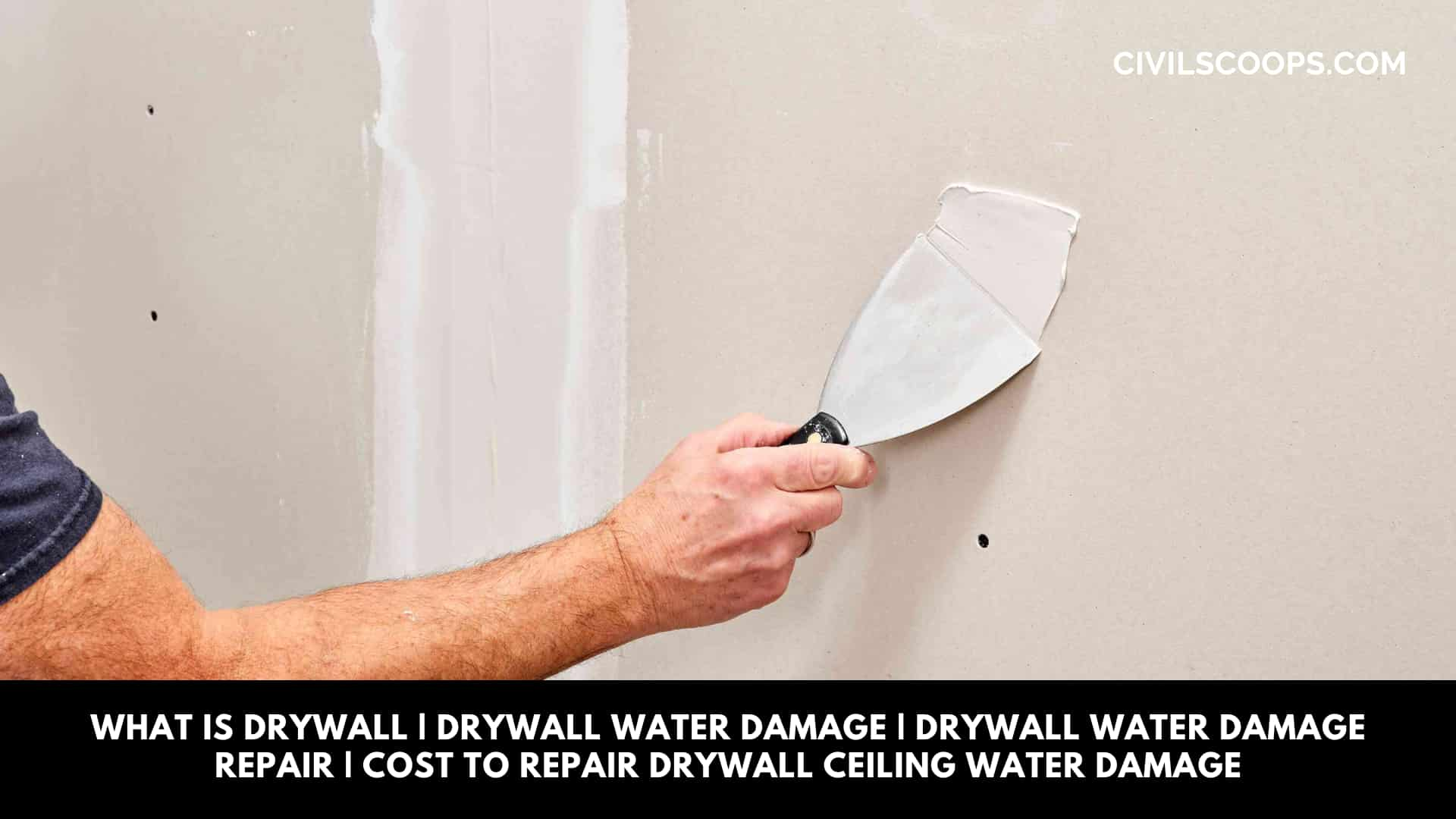
Table of Contents
What Is Drywall?

Drywall is basically a gypsum board which is installed on the interior wall of the house. Drywall is widely known by some other names like gypsum panel, sheet-rock, wallboard, custard board, buster board, etc.
In drywall, a gypsum board is sandwiched by two paper boards. Those are attached by quick set gypsum plaster. Sometimes foaming agents and plasticizers are also added with the gypsum plaster. Drywall construction was started in the time of 20th century in the USA to save the labour cost of plastering.
What Is Drywall Made Of ?
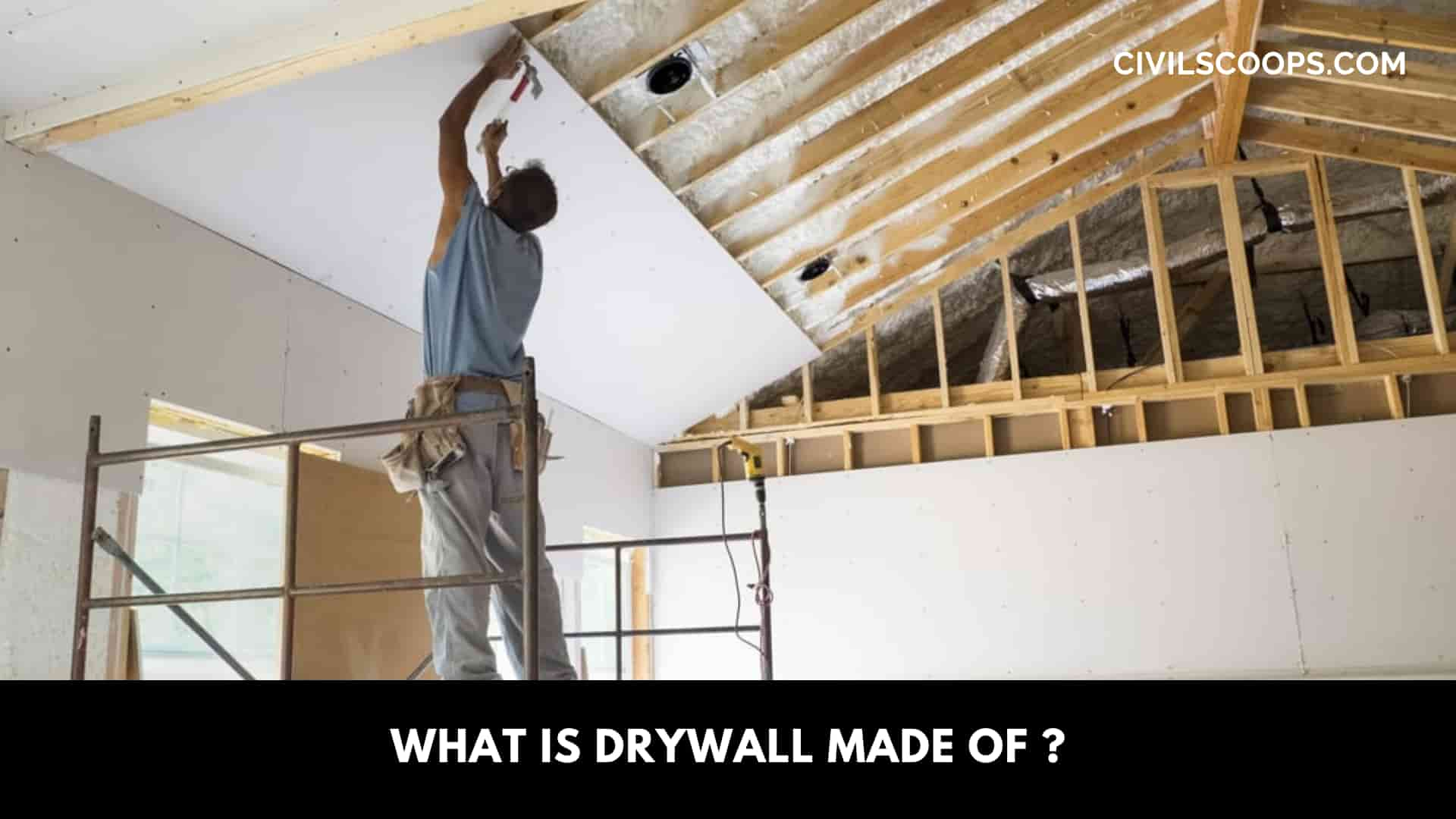
Drywall is naturally made of gypsum board. The Gypsum board is placed in the middle of the total structure and it is surrounded by two paper boards. The installation process of drywall is almost the same as other interior objects. Here, we are using gypsum plaster with a foaming agent and some plasticizers.
What Drywall to Use in Bathroom?
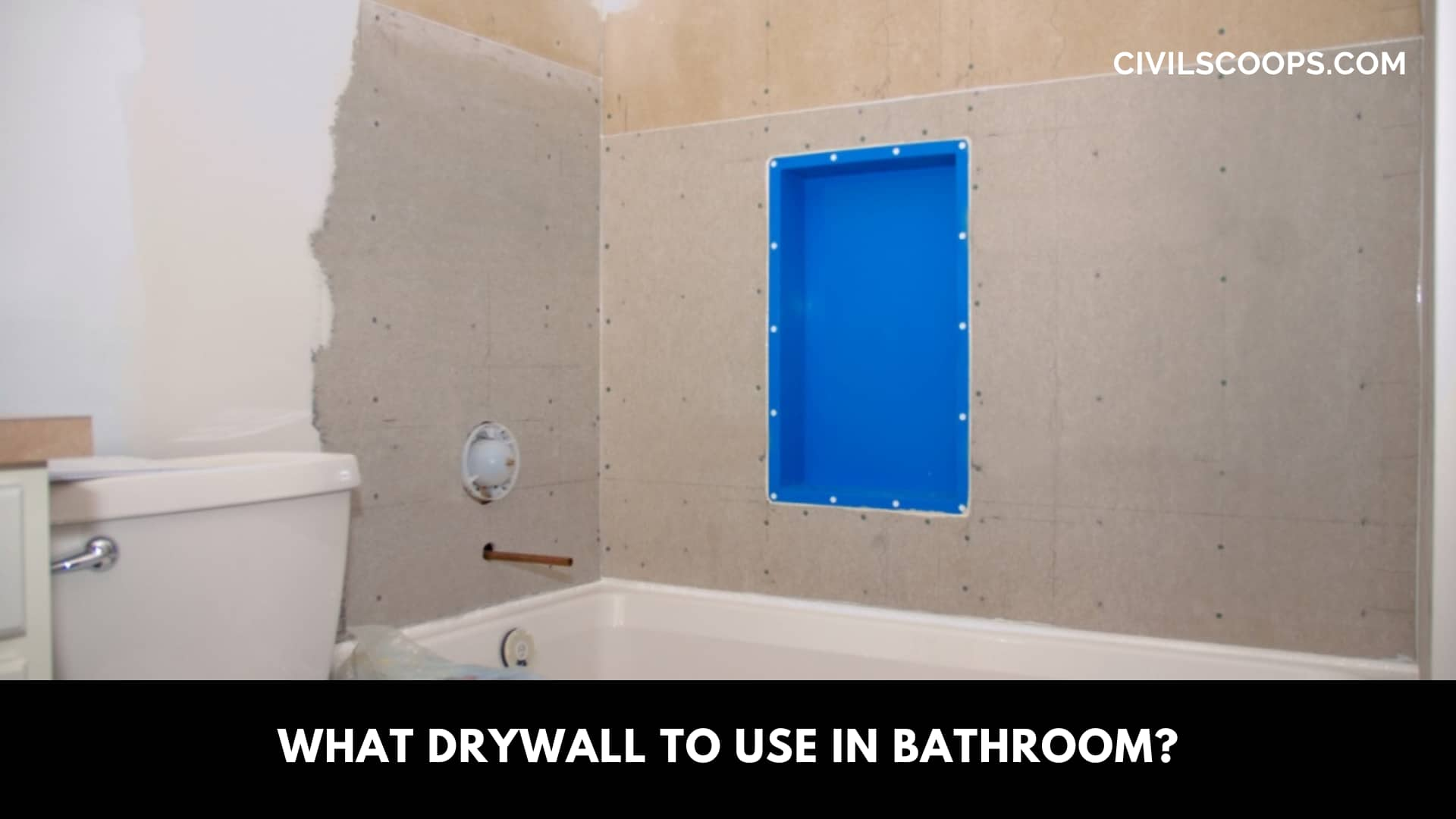
There are generally different types of drywall that can be used in the bathroom, those are-
- Greenboard: In the bathroom, we need to use the drywall which can resist the water and the greenboard is that type of drywall. It is a green coloured board with a wax finish over it for waterproofing.
- Cement Board: Cement board is also another type of drywall board which is used in the bathroom. Here, cement is used for waterproofing.
- Blueboard: It is also used in the bathroom where gypsum crystal is used for better bonding and waterproofing.
- Whiteboard: Whiteboard is the most common type of drywall which is used in bathrooms. It is generally standard sheetrock.
- Paperless Type: In other types of drywall, we are using coated paper on the outside of the gypsum board but here we are using fibreglass, instead of paper.
- Type X and Type C: In this type of drywall the mainboard is covered with glass from both sides. It is done to create the whole fireproofing system.
- Purple Drywall: This drywall is actually used for mould-resistant and moisture resistant purposes.
- Soundproof Drywall: This type of drywall is used in the study room, library, etc. Here, polymers, laminated wood and gypsum are used for soundproofing purposes.
- Soundboard Drywall: This type of drywall is infused with fibre boards which help to create a passage for sound. It is used in musical instruments, amplifiers, speakers, etc.
Enviroboard Drywall: This type of drywall is very modern days which is made of recycled cellulose.
Drywall Construction
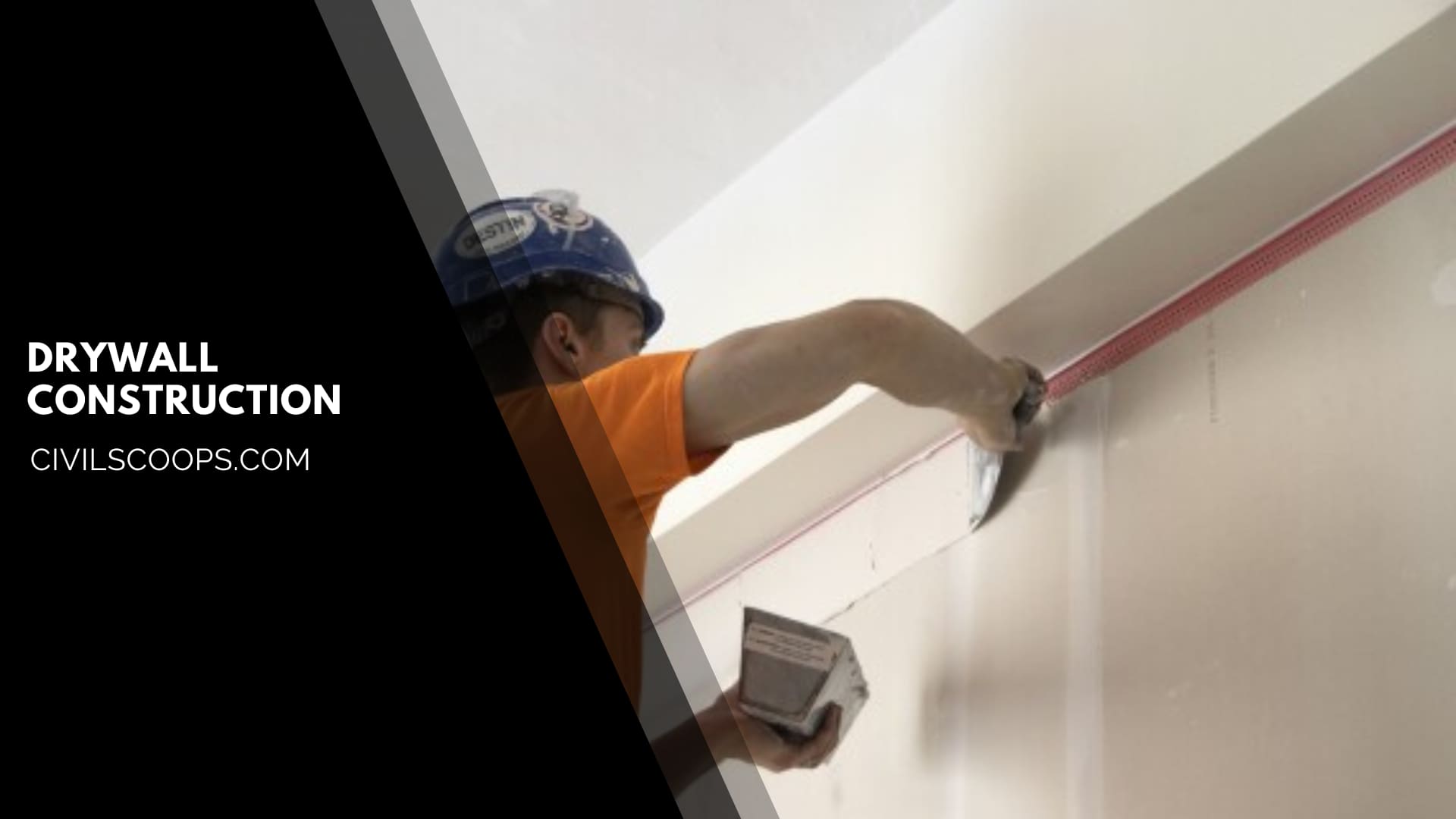
Here, the drywall construction procedure are as follows.
- In drywall construction, no mortar is used.
- Drywall boards are generally made of plywood, asbestos-cement board, fibre-pulp board, etc.
- Those boards are fixed with building structures with nails, screws or some adhesives.
- After that gypsum mortar is used for plastering. Plastering is done with a trowel which is made of steel. Trowel provides a smooth surface finish.
- Finally, some wallboards or coated papers are attached to this.
Drywall Installation
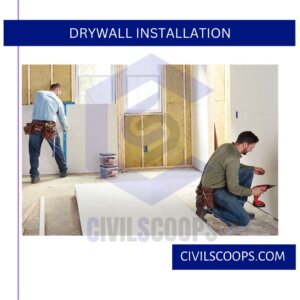
Here the Drywall installation steps are as follows.
- At first, we need to measure the place where we need to place the drywall. Measure all length, height and breadth of the place.
- Secondly, create a proper diagram of that place with all measured heights.
- After that, we need to place the drywall. We need to care about the marking sign of white colour which needs to be on the upward side of the drywall. Please use a scale for proper straight-line marking.
- For scoring, the purpose uses a utility knife but don’t press it so much because then it will go deeper and crosses the firm line, which will create more problems.
- After scoring it will create a good bump in the back sight and it will cut in half at the place of scoring.
- Then we need to use a utility knife for the cutting purpose of back paper which is attached with drywall.
- Next, we need to take it to the spot for testing purposes.
- After testing thoroughly, use screws for fitting and you need to take care about the right space and interval of those screws otherwise it will create so many problems.
- Use sufficient screws, it will prevent cracks on the drywall.
Also Read: What Is Concrete | 31 Different Types of Concrete
Drywall Repair Cost Per Square Foot
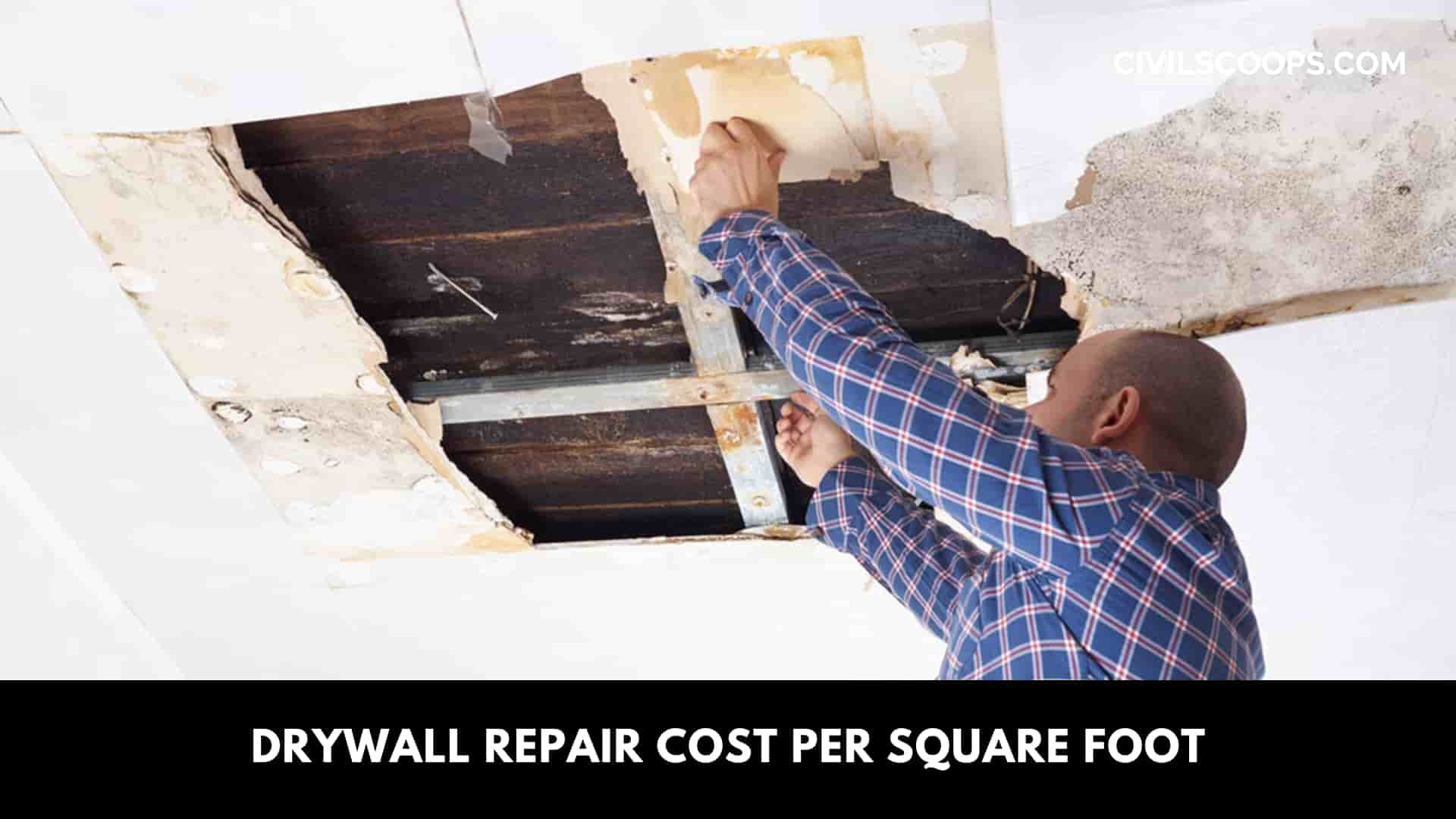
Drywall costs may vary from one place to another because of the availability of material, labour charges, transportation costs, etc. But there is some average amount, those are-
- The general cost of drywall repair cost for the whole ceiling and wall is $50 – $100 per square foot.
- The repair cost for small portion repair is $2 to $6 per square foot.
- $50 – $400 per square foot rupees are charged for whole or cracks repair in the drywall.
Drywall Ceiling Repair Cost
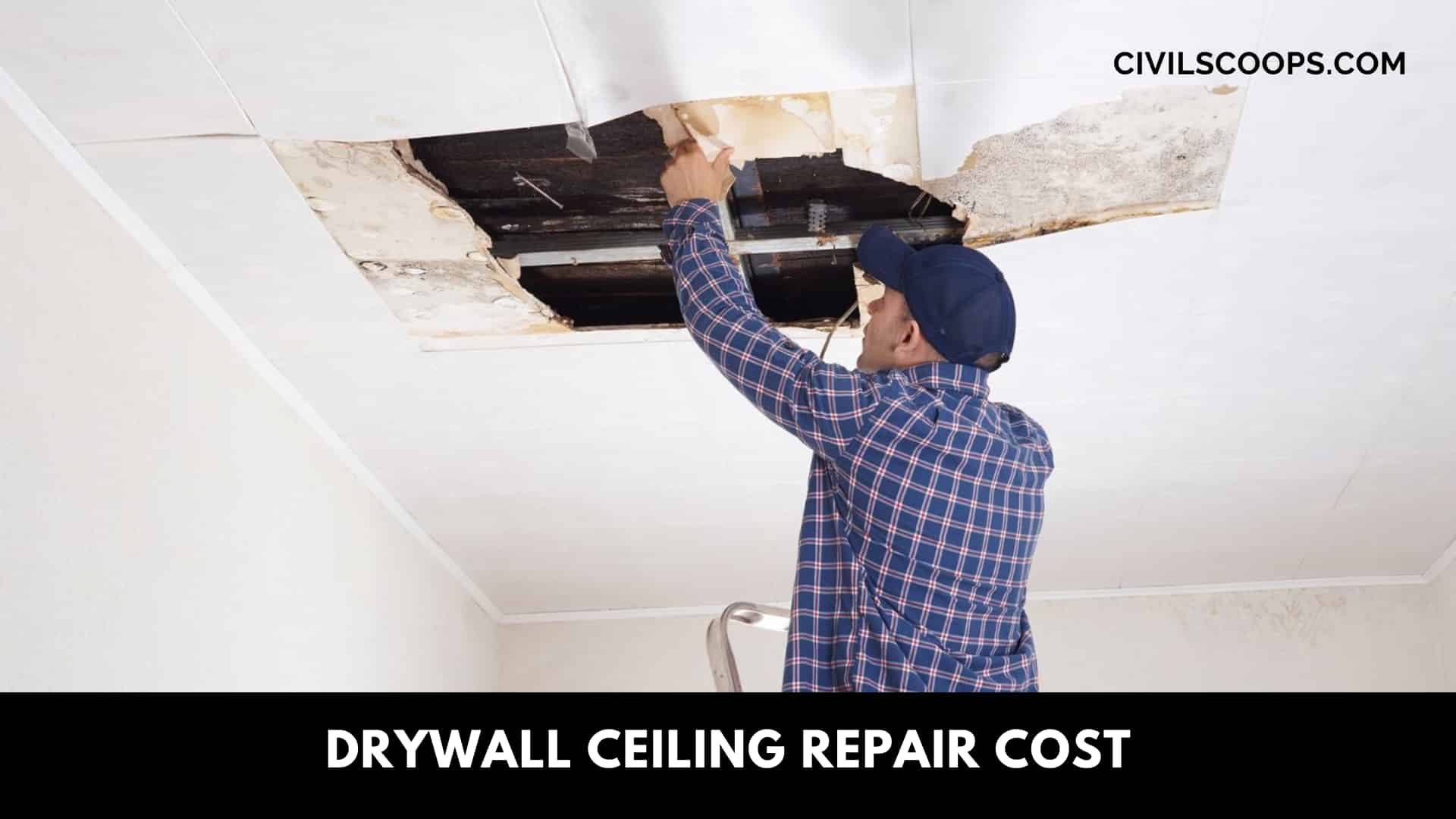
Drywall ceiling repair costs may vary from one place to another. The average cost of drywall ceiling repair is about $150 to $400. The replacement of the sheetrock ceiling is almost $400 to $1000. Here are some details of drywall ceiling repair costs, those are-
[su_table responsive=”yes” alternate=”no”]
Repair Types |
Average Costs |
| Medium to large holes | $200 – $400 |
| Small holes and dents | $50 – $150 |
| 6” hairline cracks | $100 – $250 |
| 6” – 24” medium cracks | $120 – $130 |
| Texturing or painting | $150 – $600 |
| Corners or large cracks | $150 – $400 |
| Minor water damage | $200 – $500 |
| Medium water damage | $200 – $600 |
| Sagging ceiling | $250 – $1000 |
| Major water damage and leak repair | $500 – $2500 |
| Ceiling replacement | $400 – $1000 |
[/su_table]
Also Read: What Is Classification of Bricks | Classification of Bricks Different Base
Drywall Installation Cost
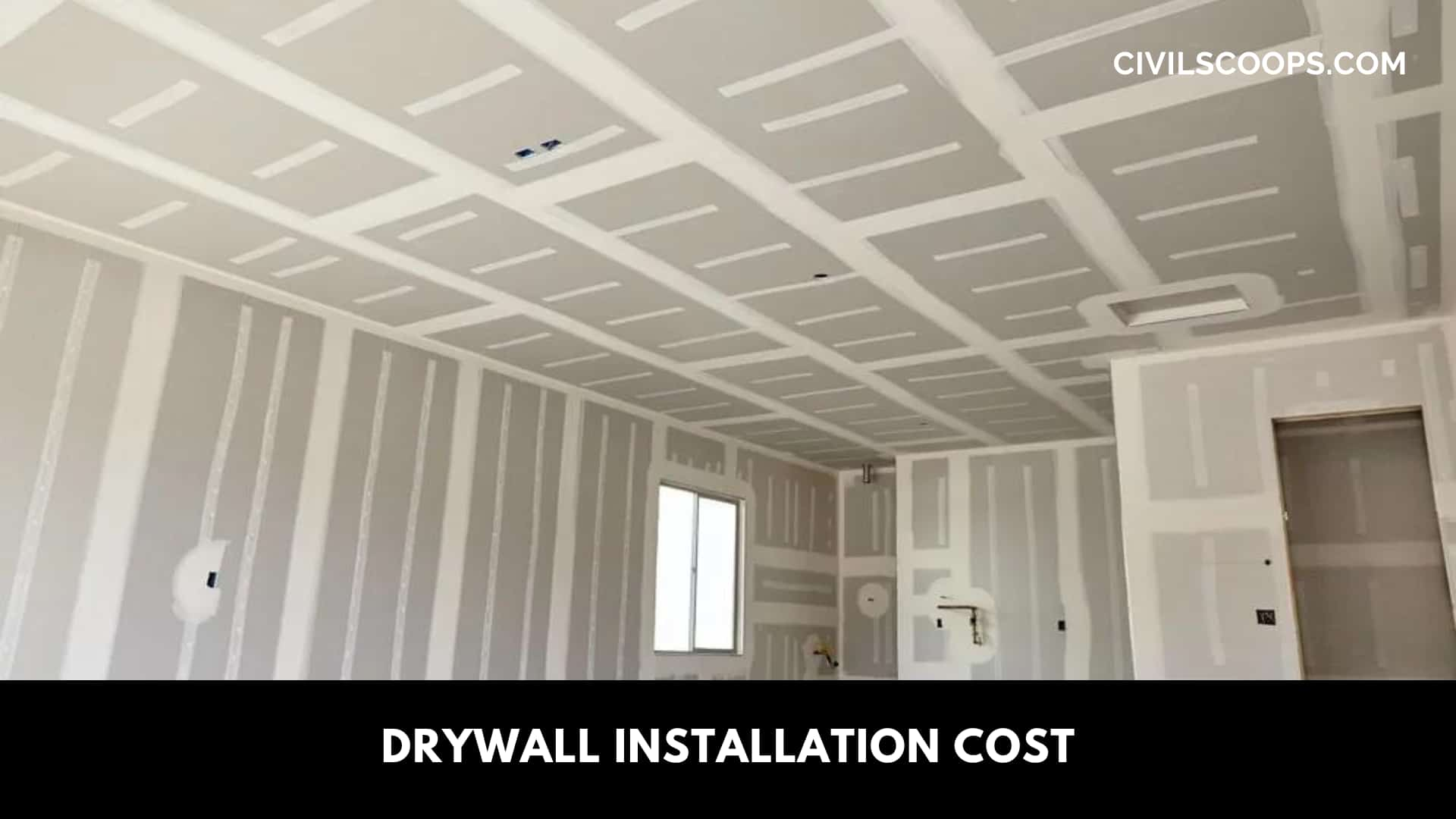
Here, the how much coat of drywall installation are as follows.
- The general installation cost for drywall is near about $1.5 to $3.5 per square foot. The material varies from $0.5 to $0.8 and the labour charges are $1 to $2.7
- The drywall installation for a 12” x 12” room is near about $580 to $1800.
- The drywall installation cost of a 2000 sq. ft. house is $8000 to $30,000
Some other installation cost of drywall is the following-
[su_table responsive=”yes” alternate=”no”]
| Room Type |
Average Cost
|
| 12” x 12” room | $580 – $1800 |
| 5” x 8” room | $300 – $1000 |
| Master bedroom 12” x 20” | $750 – $2600 |
| Carriage 20” x 20” | $1000 – $3900 |
| Living room 16” x 20” | $850 – $3100 |
| Basement (1000 sq. Ft.) | $1500 – $7000 |
| House (1500 sq. Ft.) | $5500 – $22000 |
| House (2000 sq. Ft.) | $8000 – $30000 |
| House (2500 sq. Ft.) | $9000 – $35000 |
| House (3000 sq. Ft.) | $10000 – $45000 |
[/su_table]
[su_box title=”FAQ” style=”default” box_color=”#333333″ title_color=”#FFFFFF” radius=”3″ class=”” id=””]
What Is Drywall Made of?
Drywall, also known as plasterboard or wallboard, consists of two paperboards that sandwich gypsum, a powdery white or gray sulfate mineral. Gypsum is noncombustible, and compared to other wall materials, like solid wood and plaster, gypsum boards are much lighter and cheaper.
What Is Type X Drywall?
Type X drywall has special core additives that allow it to be used in fire rated designs and usually comes in 5/8” thickness. Type X drywall products will have a UL/ULC Marking printed on the back of each board identifying it as a fire-resistance rated board.
What Type of Drywall for Bathroom?
Regular drywall is not recommended in bathrooms as it can easily absorb this moisture and mold or even disintegrate. Instead, bathroom walls should be constructed from drywall that is resistant to mold, mildew, and moisture. The best product to use for bathroom walls is MMR drywall, also known as green board.
What Is Drywall Used for?
Drywall, also called wallboard, any of various large rigid sheets of finishing material used in drywall construction to face the interior walls of dwellings and other buildings. Drywall construction is the application of walls without the use of mortar or plaster.
What Is Behind Drywall?
Studs are vertical 2 by 4 inch beams that support the frame of your home. You can find them behind your drywall, usually spaced 16 or 24 inches apart. Since studs are made of thick and sturdy wood or metal, they can securely hold screws better than wall materials like drywall.
What Is Hot Mud for Drywall?
Powdered drywall mud, also called “setting mud” or “hot mud,” contains chemicals that hasten hardening time when water is added to the powder. This type of mud tends to shrink less than all-purpose premixed mud, but it hardens very quickly.
What Is Blue Board Drywall?
Blue Board Drywall- Blue board drywall is another moisture resistant drywall that is used for veneer plastering. It has high water and mold resistance as well as unique absorption qualities. This type of drywall is often used in bathrooms and other rooms with a lot of moisture.
What Drywall to Use in Shower?
We recommend using cement board drywall in tile-covered wet applications, such as showers and bathtubs. So, you would first install the cement board to provide a base for the tile.
Drywall Construction
Drywall construction, a type of construction in which the interior wall is applied in a dry condition without the use of mortar. It contrasts with the use of plaster, which dries after application.
Drywall Installation Cost
The cost to finish the drywall ranges from $0.50 to $1.15 per square foot. Combining these costs gives a total drywall installation cost range of $1.15 to $3 per square foot.
Cost to Finish Drywall
Taping and mudding drywall after it’s hung can range from $0.40 to $0.70 per square foot, while sanding and priming costs between $0.10 and $0.50 per square foot. The cost to finish the drywall ranges from $0.50 to $1.15 per square foot.
Drywall Cost Per Sheet
Standard drywall is about $10 to $20 per panel, but the price depends on the height and thickness of the panels you need. For most rooms, a 4-by-8-foot panel of about 1/2-inch thickness is ideal and costs an average of $15 per panel.
Drywall Repair Cost
In general, the national average for repairing drywall is about $50–$80 per square foot or $60–$100 per hour. The most relevant cost factor is the repair size, since larger holes require more materials and labor.
Drywall Replacement Cost
The average cost to install drywall, including the finishing, taping, labor costs, and materials, is between $1.50 to $3 per square foot. This cost works out to around $60 to $90 per drywall panel.
Cost to Repair Drywall Ceiling Water Damage
Expect water damage ceiling repairs to cost between $45 and $55 per square foot, including everything needed for the job. Remember to add the cause of the water damage on top of this cost, such as: Plumbing repair costs: $175–$3,000. Roof replacement: $3.50–$5 per square foot.
[/su_box]
[su_note note_color=”#F2F2F2 ” text_color=”#333333″ radius=”3″ class=”” id=””]
Like this post? Share it with your friends!
Suggested Read –
- Nail Vs Screw | What Are Nail | What Is Screw
- All About Pony Wall | What Is a Pony Wall | Uses of Pony Wall | Pros and Cons of Pony Wall
- Difference Between Tied Column and Spiral Column | What Is Spiral Column | What Is Tied Column
- Polysulfide Sealant Vs Polyurethane Sealant | Functions of Sealants | What Is Polysulphide Sealant | What Is Polyurethane Sealant
- What Is Mass Concrete | Properties of Mass Concrete | Advantage of Mass Concrete | Disadvantage of Mass Concrete |How Much Mass Density of Concrete
[/su_note]
